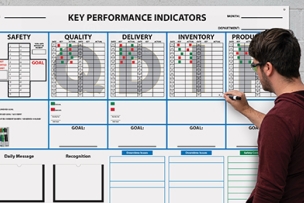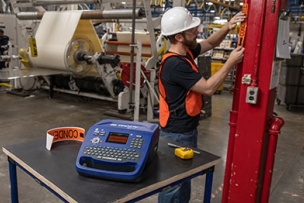As manufacturers face these new challenges, there are ways they can enhance worker loyalty through good communication and empathetic leadership.
Read more: Shift Work and Health: Why You Need a Strategy to Keep Your Workers Safe
Retraining and Retaining Talent
The struggle to fill critical jobs remains a key problem for manufacturers, so managers should continue to find ways to improve their talent pipelines, develop strong workplace cultures and ensure training programs for the digital future of manufacturing. But for many manufacturers, the most pressing challenge is retraining and retaining the talent they already have.
A good first step toward solving this problem is to consider retention strategies, such as finding out why workers may be thinking of leaving your company. Do they feel valued? Are they compensated fairly? Have they been overworked?
To answer these questions you may want to consider speaking with teams that suffered significant cutbacks during the pandemic in case the remaining staff members are suffering from high burnout rates, which may be exacerbated by the departure of more staff.
If your workers are leaving, are your rivals profiting from your vulnerability by hiring away your best talent with higher wages, bonuses and other perks? And would overhauling your compensation program, healthcare benefits or work culture help retain workers?
Retraining your existing staff is another factor in employee retention. American manufacturing continues to evolve dramatically, with shops incorporating advanced manufacturing processes and technologies, such as robots, sensors and data management. Maintaining a competitive advantage in these new areas of manufacturing starts with training your people.
With millions of manufacturing jobs available in the United States expected to go unfilled, companies are competing for scarce human talent, and so they must focus on training and developing the people they currently employ to ensure workers can stay up to date with the changes.
Professional services firm Deloitte offers the following suggestions for keeping your manufacturing workforce upskilled and trained on emerging equipment, technologies and digital skills:
- Change your talent management approach from a “supply chain” of static job descriptions and linear career paths.
- Take inventory of the skills and capabilities within your current workforce.
- Design roles that include ongoing invention and evolving skills, and then align training to this continuous learning model.
- Use advanced technologies in training environments to increase digital fluency and to upskill and reskill workers.
Read more: Risk Assessment: How to Do One and Why Technology Can Make You More Efficient
Cultivating Company Culture
Workforce well-being is an essential part of workplace culture.
According to a report by the Institute for Corporate Productivity, well-being initiatives are growing and will receive larger budgets and dedicated leadership teams in the coming years.
“Support for workforce mental health has become a core concern of well-being programs, and that emphasis on this aspect of employee wellness will continue to grow and evolve,” the report says.
It goes on to say that companies “recognize that they will need to establish formal policies that address remote work,” while monitoring the effects of the pandemic on employees returning to the workplace. This is particularly true in terms of compensation and leave considerations, which is a priority, along with the need to formalize business continuity plans for on-site staff.
Indeed, with the pandemic disrupting our working lives, completing day-to-day tasks while also managing work—and (for some) working from home—has been challenging.
For those working in predominantly blue-collar industries such as manufacturing, who may be managing child care or looking after elderly parents, flexible work schedules are important. It’s vital to know when a shift will start and end, and how much flexibility they have to manage their time.
Read more: The Benefits of Focusing on Ergonomics in the Manufacturing Industry
Look to the Next Generation
Manufacturers who want to attract and keep the next generation of employees would do well to heed the cultural evolution that is changing the expectations of the millennial (born between the years 1981 and 1996) and Gen Z (roughly from 1996 to 2010) generations.
The millennial generation, in particular, has been the subject of ample analysis and commentary, mostly revolving around the cohort’s ease with mobile technology and desire for meaning in work, and while these insights are interesting, they can be useful recruiting tools, informing companies that want to reach out to these groups.
Millennials tend to believe they can make the world a better place, and so they likely gravitate toward companies that show a strong social conscience, think about sustainability and the environment, and prioritize the well-being of workers. Companies that reflect these values and work hard to produce an attractive work culture will likely make greater progress with the newer generations.
Indeed, a strong ethical culture can affect workplace performance, according to a report from ethics and compliance consultancy LRN.
The survey shows that companies with strong ethical cultures outperform others by 40 percent across a number of measures of business performance, including levels of customer satisfaction, employee loyalty, innovation, adaptability and growth.
Do you have any tips for building worker trust in the workplace? Share your thoughts in the comments below.





Talk to Us!
Leave a reply
Your email address will not be published. Required fields are marked *